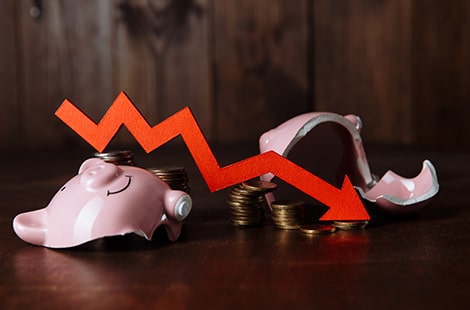High-tech counterfeit products flooding global markets have a profound impact on brand owners, the economy, and the well-being of people and nations. The increasing sophistication of fake packaging technology makes it nearly impossible to distinguish counterfeit products from the originals.
The U.S. Chamber of Commerce estimates that intellectual property theft costs domestic businesses between $200-250 billion in lost revenue annually, resulting in the loss of 750,000 jobs in the U.S. alone. A study found that even a 10% reduction in counterfeits would add $400 billion to the taxable global economy and generate 1.5 million jobs.
Fighting counterfeits is necessary to protect the brand from long-term damages, reputation and sales. To safeguard their intellectual property, many brands offer verification tools to ensure consumers are protected and receive genuine products. However, most people believe they won’t fall victim to counterfeit goods. Here are five common myths about counterfeits:
Myth: Easy to spot
Scammers are becoming increasingly sophisticated, delivering products that look highly convincing. They pay close attention to packaging, adding tags, serial numbers, and certificates of authenticity to make counterfeits appear identical to the original. Counterfeits are even marketed through the same channels as genuine products.
Myth: Bad reviews
Scammers often flood e-commerce platforms with fake 5-star ratings for their counterfeit products. Too many perfect ratings or unverified reviews can be a red flag. Another giveaway is when reviews are posted within a short time frame. The lesson? Don’t just rely on star ratings—read the reviews carefully.
Myth: Spelling errors
Counterfeiters are getting increasingly good at crafting packaging that is almost an identical match of the original product. With access to designing technology, it’s easier to match fonts and graphics and create look-alike packaging. Sometimes the fake is so convincing that it can only be identified when compared with an original side-by-side!
Myth: Select industries
No industry is immune to counterfeiting. It’s not just luxury brands like Louis Vuitton or Gucci that fall victim—counterfeit products range from apparel and electronics to toys, pharmaceuticals, pesticides, footwear, and more. Some counterfeits can even pose serious risks to human health, animals, and the environment.
Myth: China – Center for Counterfeits
While China is often blamed for being the main source of counterfeits, other regions also contribute significantly. Sources show that the Middle East accounts for 20-40% of counterfeits, China for 10-40%, and Eastern Europe for another 10-40%, along with contributions from other Asian and South American countries.
To counter intellectual-property-infringement counterfeiters, brand owners need to look beyond QR codes and holograms; opt for the latest anti-counterfeiting solutions such as crypto signatures on smart product packaging. This is an innovative digital anti-counterfeiting technology that offers fool-proof brand authentication to keep fraudulent products out of the supply chain. Here, Ennoventure helps manufacturers secure their product packaging by adding invisible crypto signatures.



